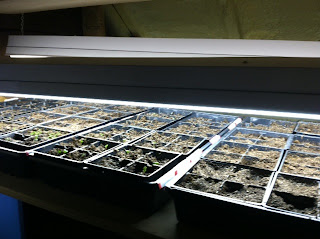I was also wrong to think that spring would come in a pleasant stepwise fashion. I've lived in New England and the Northeast long enough to know that spring is an ephemeral season, ever changing and predictable only in its unpredictability. We can generally depend on the ski areas staying open into the middle of April and the ground to be warm enough for planting tomatoes on Memorial Day, but anything can and typically does happen between March 20th and June 21st - wintry mix, floods, ice storms, 70-degree weather, weeks of continuous rain (or so it seems), mud season, black flies and maple syrup. Case in point - it was so warm that I didn't wear socks this past Friday, and yesterday it snowed five inches.
This weekend, the extra daylight was much appreciated as we hosted our second annual maple sugaring party. This party is actually just a ruse to coerce our friends and family into hanging out with us as we stand around all day waiting for maple sap to boil down into maple syrup. And it does take ALL DAY to boil down maple syrup - we figure it takes about 12 hours for us to boil down 20 gallons of sap into a half gallon of syrup. (For you math fiends out there, the ratio is 40 gallons of sap yielding 1 gallon of syrup - or 39 gallons of water that need to be turned into steam.) Commercial maple producers and serious hobbyists have specialized equipment to move the process along faster and are substantially more efficient. We have an abundance of scrap wood and free time, so we boil in a big pot over an open fire.
We got a late start this year on the boiling, so even though we stayed out until the sun went down (and much later into the full moon night), we ended up finishing the syrup the next day. It was a beautiful thing - sweet-smelling, amber-hued maple syrup on a Sunday morning. We're storing the jars of syrup in the fridge until we can distribute it to our partygoers.
 |
| The sweetest part of springtime - maple syrup |
Stay tuned for the results of this upcoming weekend's maple sugar boil... we're hoping to have another 20 gallons to boil down.

